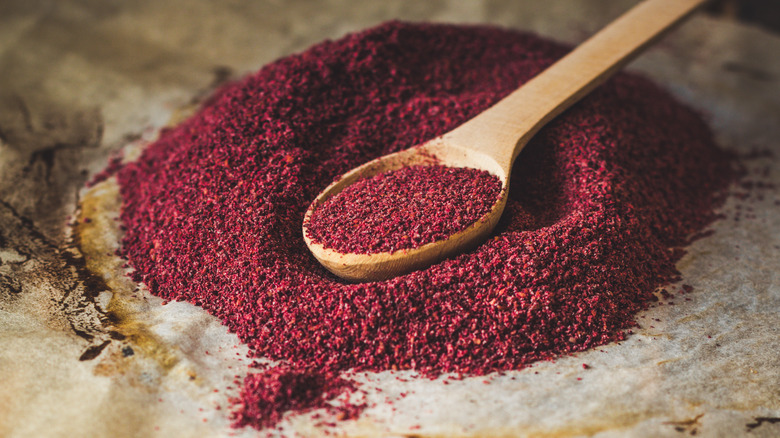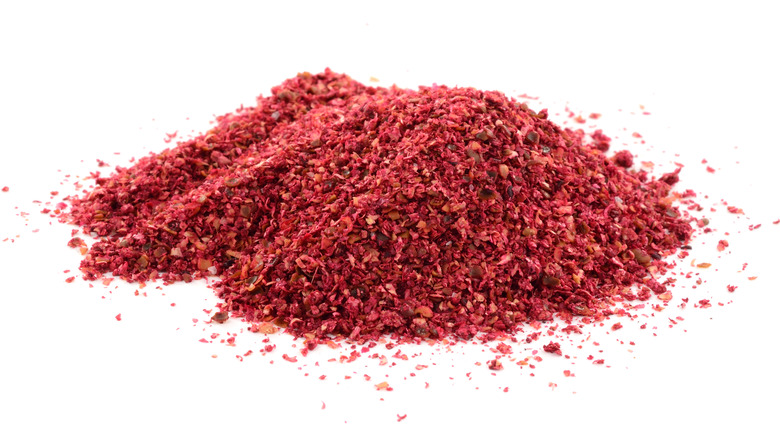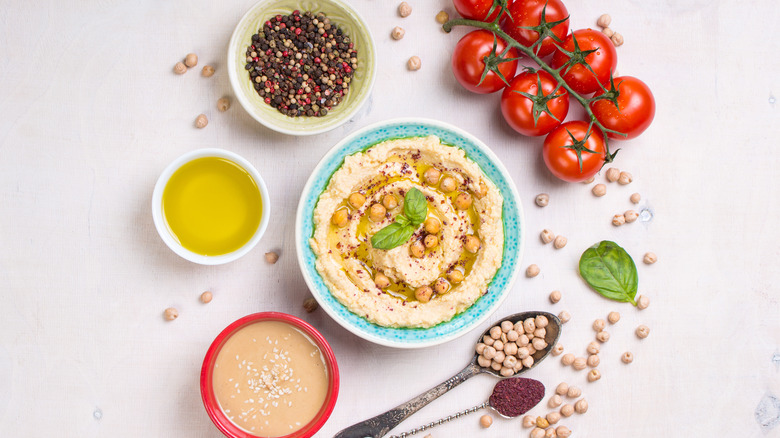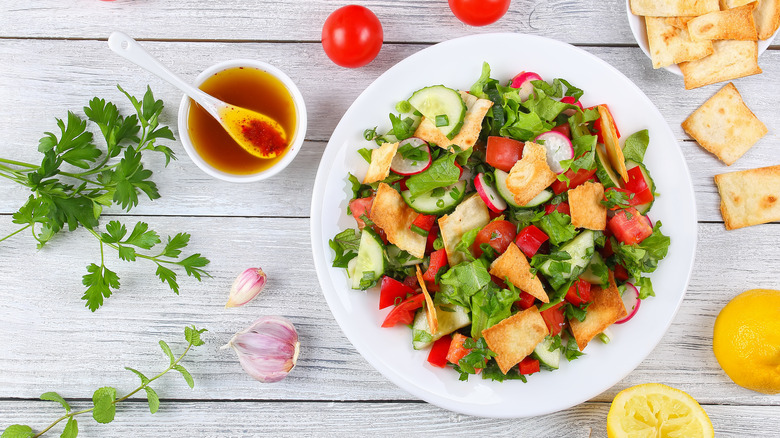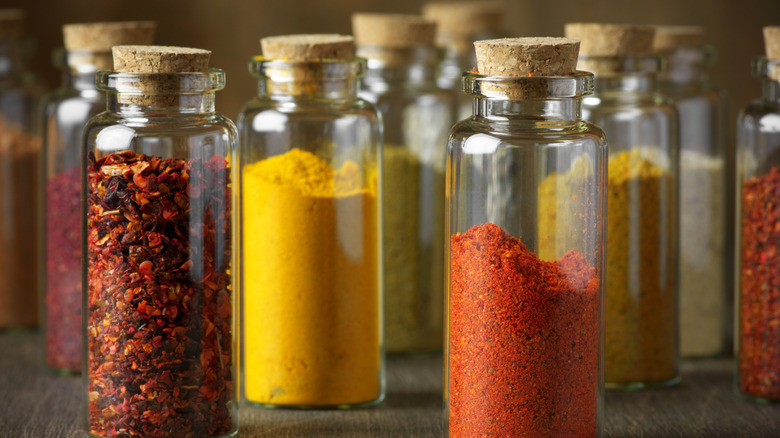What Is Sumac And What Does It Taste Like?
You might not use sumac in your cooking as often as you do paprika or chili powder, but it is an excellent spice that can lend flavor, depth, and nutritional benefits to a slew of dishes. Grown on shrubs in the Middle East, Italy, and beyond, sumac comes from a vibrant, crimson berry that is dried and then ground into a coarse powder, according to Taste of Home. While the fragrant spice is typically sold as a ground seasoning, the berries can also be purchased whole. Processed, ground sumac has a darker hue than its berry counterpart. The color of sumac is so distinct that it's actually named after the Aramaic word summaq, which means dark red, The Spruce Eats reports.
Sumac is often used in Middle Eastern cooking, and its primary claim to fame is its inclusion in the oft-used spice blend za'atar. When added to dishes, sumac lends a tart, floral, and slightly acidic note that is akin to lemon.
What is sumac?
Sumac grows primarily in warm and humid areas of Africa and North America, says Food Republic, but can also be found in Middle Eastern countries such as Turkey and Iran. There are different variations of sumac berries, but the most commonly used are the red or burgundy versions, known for their trademark color, while the white ones are poisonous (via Serious Eats). These berries grow on sumac trees or shrubs in tight clusters, which are harvested and either soaked in water (so the infused water can be used for cooking or drinking) or gently dried until the sticks and seeds can be separated from the fruit. The fruit is then further dried and pulverized into the powdery, ground version most often sold in stores.
According to The Spruce Eats, sumac has been used in various capacities for at least 2,000 years. In North America, sumac was used for medical needs by indigenous peoples, including caring for people after childbirth, soothing asthma, aiding gastrointestinal issues, healing wounds, and treating tuberculosis, Cook's Info shares. Furthermore, many Native Americans would use sumac to create drinks very similar to beer. Other cultures have beverages such as tea or even sumac-ade, which is a lemonade-esque drink that is said to boast a multitude of nutritional and healing benefits.
What does sumac taste like and how do you cook with it?
Cook's Info notes that sumac's tart flavor is due to the malic acid that is on the surface of the berry itself. It does not quite offer the same lip-puckering sour bite that lemon does — it's more of a subtle brightness. Real Simple notes that the spice can act as a souring agent that can stand in for other ingredients often relied on to add freshness and acidity, such as citrus or vinegar. It's also superb with various vegetables, including everything from potatoes to chickpeas, and it blends beautifully with yogurt, grains, and myriad protein options. Serious Eats outlines many creative ways to use sumac, including with popcorn, fried foods, marinades, dipping oils and sauces for bread, and even in desserts such as donuts and ganache. Sumac is especially versatile because it doesn't always need to be "toasted" or cooked into a dish; it can simply be sprinkled onto your favorite foods.
MasterClass recommends using sumac on raw vegetable salads, kabobs, fattoush, and tahdig. It blends well with other spices and works in meat rubs and as a topping on feta, hummus, labneh, or baba ganoush. In addition to its tart flavor, sumac also adds a beautiful color to whatever it is sprinkled on. Try it as a natural food coloring for cake frostings and jellies.
Nutritional information about sumac
Spiceography notes that if you have an allergy to mango or cashews, you may want to steer clear of sumac because it is part of the same family. On a more positive note, sumac contains many antioxidants, which may have cancer-preventing properties and help to prevent heart disease, according to Healthline. Though you're only likely to use it in small amounts, it does contain significant amounts of healthy fats, fiber, and vitamins, making it a worthwhile addition to dishes for those seeking maximum health benefits in their cooking. Furthermore, it may promote balanced blood sugar and alleviate muscle pain.
The perks don't stop there. Real Simple notes that sumac's anti-inflammatory properties can aid in reducing the signs of aging, while a study shared in the U.S. National Library of Medicine summarizes the spice's antibacterial and antifungal properties, which "are of great importance in improving human health and economy."
Where to buy sumac
Simply Recipes advises that sumac is easily found at specialty spice shops. However, many general supermarkets now seem to carry ground sumac, and it can also be purchased from many online vendors. Look for it in the spice aisle or among international foods. Sumac is growing in popularity in the U.S., with Forbes naming it as one of the major food trends of 2020, so it shouldn't be too hard to track down.
In case you are instead planning on harvesting or cultivating your own sumac clusters, Farmers' Almanac warns that you should be careful to only pick sumac with red berries. White sumac berries indicate a poison sumac plant, similar to poison ivy, which shouldn't be eaten under any conditions. Now that you're well-acquainted with this burgundy spice, try it out in your next meal. It's sure to become a favorite in your spice cabinet in no time.
